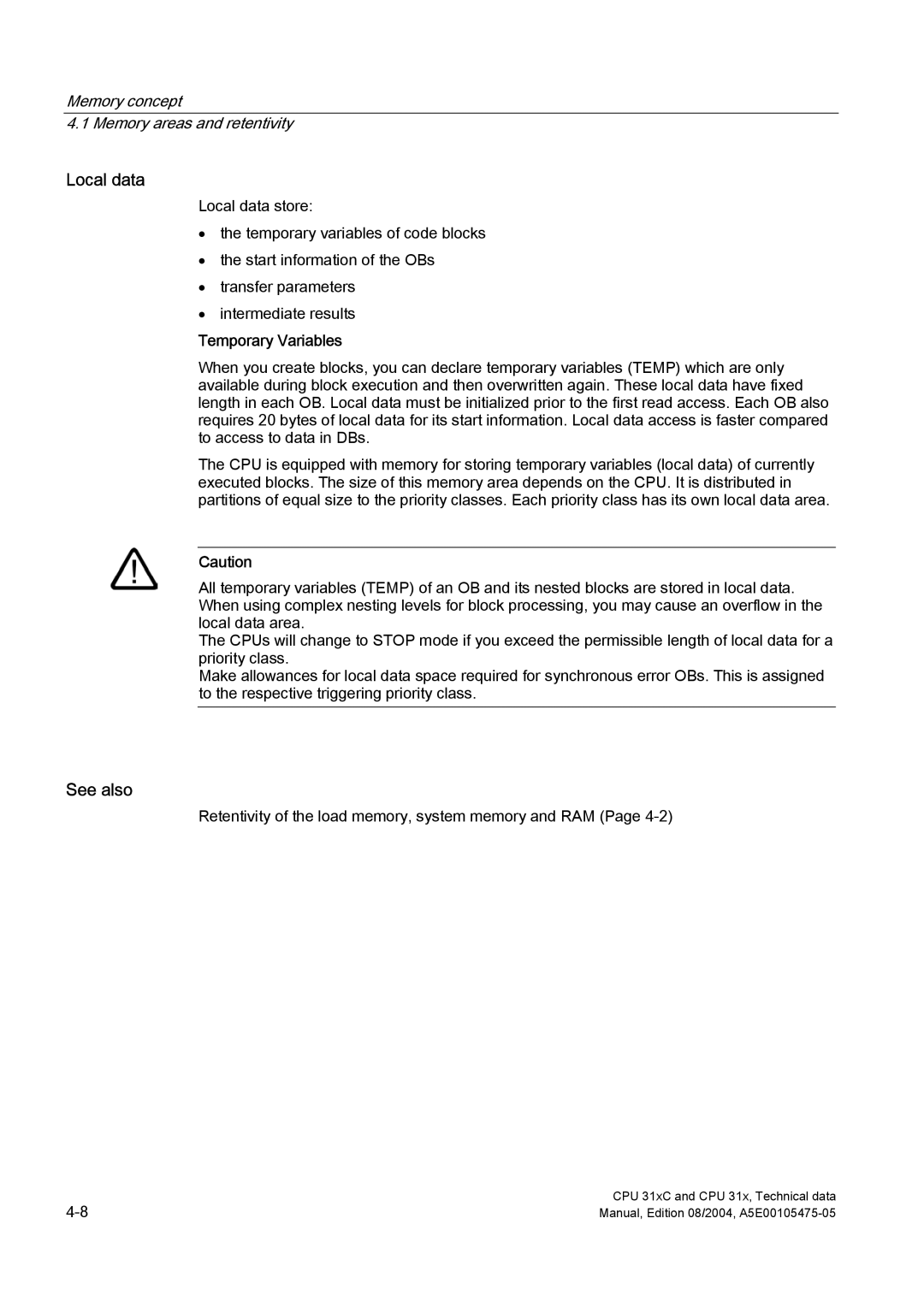
Memory concept
4.1 Memory areas and retentivity
Local data
Local data store:
•the temporary variables of code blocks
•the start information of the OBs
•transfer parameters
•intermediate results
Temporary Variables
When you create blocks, you can declare temporary variables (TEMP) which are only available during block execution and then overwritten again. These local data have fixed length in each OB. Local data must be initialized prior to the first read access. Each OB also requires 20 bytes of local data for its start information. Local data access is faster compared to access to data in DBs.
The CPU is equipped with memory for storing temporary variables (local data) of currently executed blocks. The size of this memory area depends on the CPU. It is distributed in partitions of equal size to the priority classes. Each priority class has its own local data area.
Caution
All temporary variables (TEMP) of an OB and its nested blocks are stored in local data. When using complex nesting levels for block processing, you may cause an overflow in the local data area.
The CPUs will change to STOP mode if you exceed the permissible length of local data for a priority class.
Make allowances for local data space required for synchronous error OBs. This is assigned to the respective triggering priority class.
See also
Retentivity of the load memory, system memory and RAM (Page 4-2)
CPU 31xC and CPU 31x, Technical data | |
Manual, Edition 08/2004, |
